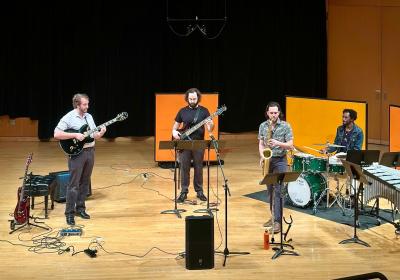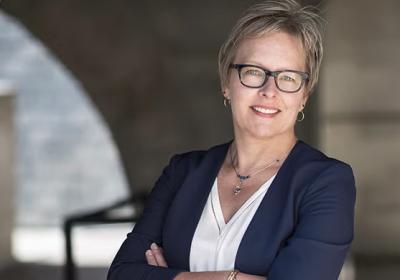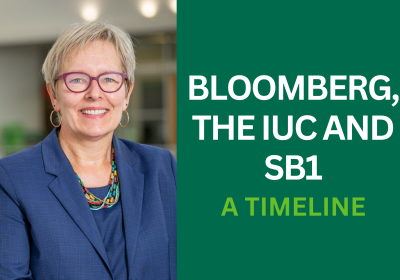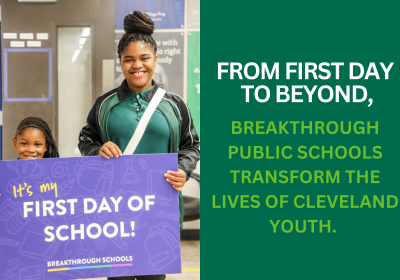Professors comment on transition to online classes
Just as students have had to adjust to the transition from in-person classes to online courses, so have professors. Many have had to transfer all their lesson plans over to various platforms and alter their original plans to accommodate the time-sensitive switch. Cleveland State professors have commented on how they’ve been adjusting and using different platforms.
Ted Lardner, Ph.D., an English professor, said that in some ways he has been enjoying the liberation from the schedule of being in a classroom at a certain hour on a certain day.
“The experience has been mixed,” Larder said. “Effectively being free of that real-time obligation furnishes flexibility to think and circle back to ideas I see cropping up in students’ writing and online comments. The upside of this flexibility in responding is, it stretches class time to 24/7. I don’t know about other teachers; it takes me a while sometimes to figure out what to say.”
Lardner also said that in circumstance of the pandemic, that luxury of time is mitigated by the real effects of stress and anxiety, and the simple need to recalibrate very basic day-to-day activities, such as figuring out if it’s safe to go to the grocery store and would he be able to get to his daughter, who is sheltering 600 miles away, if she needs him. Lardner admitted that the pandemic presents a real challenge to focus.
“I was never interested in teaching an online class, and I was a very late adopter of Blackboard, which for all its proven usefulness I find clunky and, like having to buy the Office suite of software to get a word processing program, comes with way, way more functionality than I’ll ever want to use in my career,” Lardner said.
“That being said,” he continued, “it is serving its purpose this semester. And I’m stripping down the course assignments, too. I’m lucky: because I’m teaching writing courses, I do not find it necessary to generate lectures or create Power Point programs or by other means deliver content that students cannot otherwise get by doing the reading I assign.”
While all professors have always had access to Blackboard, it wasn’t always used as much as it is now.
Jeffrey Bolt, Ph.D., a communication professor, has put all of his classes on Blackboard, and while he’s familiar with teaching online classes, it was a lot of work up front. “I probably worked 70 hours the first week to get everything up and going,” Bolt said. “However, now things have calmed down for me.”
Bolt has students watch videos of him lecturing through Panopto. He also has students using the discussion board to interact with one another. In addition to that, he has included more written directions for assignments along with special videos explaining the assignments. Bolt sends a weekly email to students and continues to answer questions over email and Zoom throughout the week.
Bolt said he thinks many students have less interaction. He reads their brief discussions and grades their work, but he doesn't actually see them or interact with them too much.
“I can't tell if they like my bad jokes anymore,” Bolt said. “However, for some students who are not as confident or experienced with distant learning and technology, my interactions have been greatly increased. Several students I have had multiple one-on-one zoom meetings to help them move through the class.”
Peter Manos, Ph.D., a professor of history, is also familiar with teaching online courses and has often relied on Blackboard in the past. “The biggest challenge has been trying to coordinate a class in real time as many students do not have the technology at their disposal,” Manos said. “And of course, there are some without Wi-Fi right now and that is compromising many, and I need to make allowance for that by working with guidance to contact these students."
Film and Media Arts Professor James Denny, M.A., said he thought the transition was easy enough technically but very time consuming. In his “History of TV and Contemporary Film” class, he had to come up with alternate ways for students to be able to access the scheduled screenings of shows and films.
“OneDrive has been very useful in sharing files with students. The lectures are now delivered via PowerPoint on Blackboard, complete with links to clips of films and shows for them to watch,” Denny said. “We are also utilizing the Blackboard discussion forums heavily, where students can discuss the films and shows that we watch. Though I prefer the classroom interaction, it has been nice to be able to communicate with the students in a more one-on-one capacity, albeit an online one-on-one.”
Adam Sonstegard, Ph.D., professor of English, is another professor who is a veteran when it comes to online classes. As he has taught online for Cleveland State for the past seven summers, it was not a shock, nor anything new to take the classes abruptly online. Though, he added, he obviously had less prep time this spring. He also mentioned that some colleagues who had sophisticated class and lab activities running in classrooms, suddenly had to translate the courses to much different environments.
Aside from the technicalities of transitioning, Sonstegard has found he can’t be as personable nor as discreet in a virtual environment as he can in person, especially when he’s managed to build up a certain rapport with receptive students.
“A class I'm teaching in LGBTQ literatures, for instance,” Sonstegard said, “just isn't the same when electronically mediated, as it's much more automated now, much more impersonally distanced. That's not any of the students' fault, but it's a bit discouraging, personally as well as professionally.”
Sonstegard said faculty in his field have relied on Blackboard, Zoom, Skype, and Teams for virtual connections as well as Panopto for video.
Professors have also kept students in mind while moving forward with their classes, and how this whole experience will affect the future of learning.
“I really wonder—from this experience and from watching my son complete his semester in engineering classes remotely—what will have shifted in the way we ‘deliver instruction’ after the stay-at-home order is lifted,” Lardner said. “All that said, I worry about my students though. I worry about their access to internet service, and I worry about their mental health, and I worry about their physical health—I don’t want anyone to contract the virus!”
“I worry about households where lost income is a major stressor, and confinement is a pressure,” Lardner said. “I hope and invite my students to think of our course as a place to focus, to feel connected, if even remotely, to be in dialogue with others, to allow the gift of having a task to complete, draw their attention into something concrete, something controllable, something they can do for themselves and each other in the virtual space of our little online communities.”










